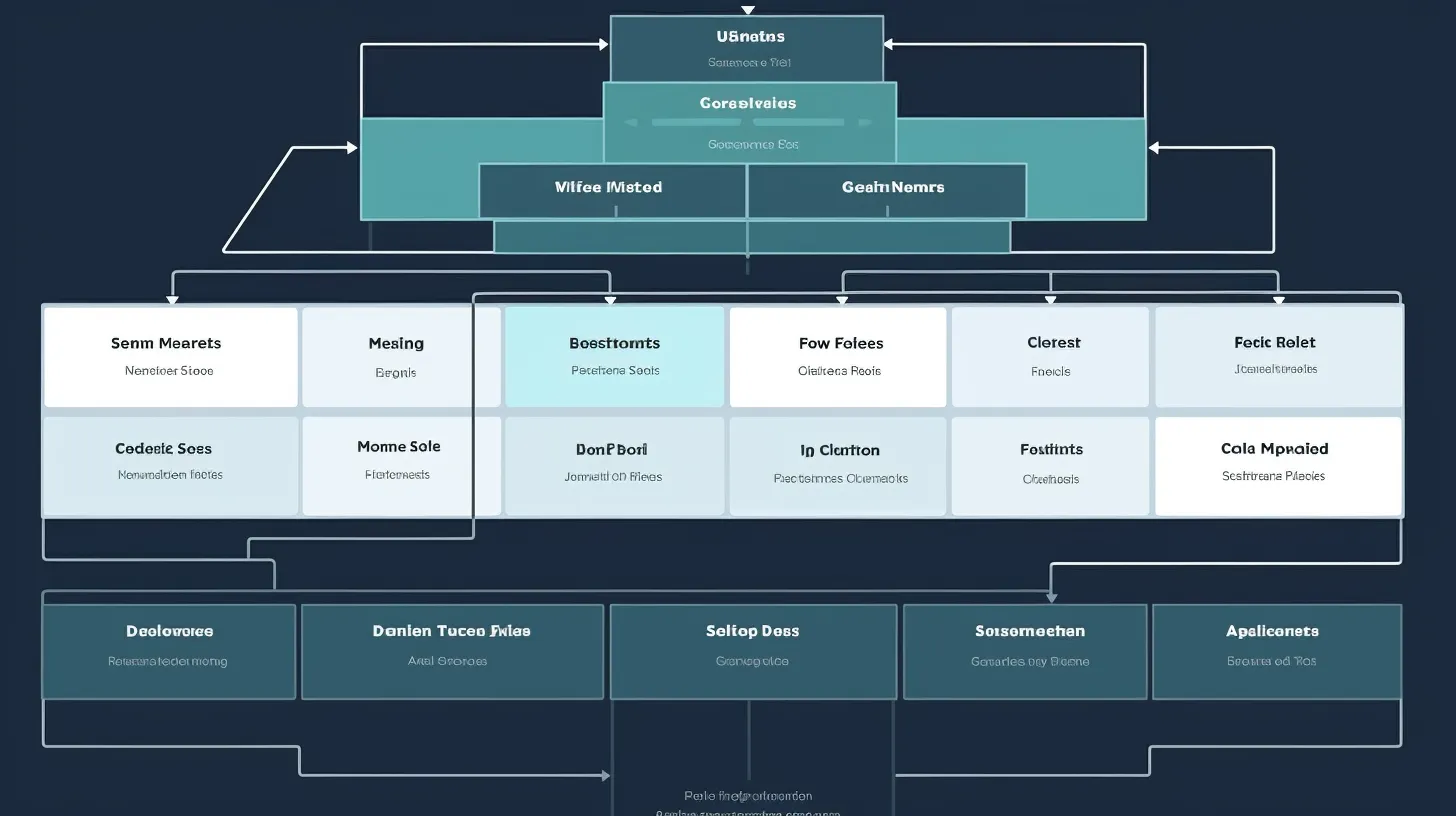How To Create An Seo-Friendly Site Architecture
Search engine optimization (SEO) is a crucial aspect of online marketing. One of the key elements that can affect your website's SEO performance is site architecture. Simply put, site architecture refers to how the pages on your website are organized and linked together. An effective site architecture not only makes it easier for users to navigate through your website but also helps search engines understand the content and relevance of each page.
Creating an SEO-friendly site architecture requires careful planning and execution. It involves understanding the principles of information hierarchy, user experience design, and technical optimization. In this article, we will explore some best practices for creating an optimal site structure that can improve your website's visibility in search results and provide a better user experience for your visitors. Whether you're starting from scratch or revamping an existing website, these tips will help you create a solid foundation for your SEO strategy.
Understanding The Importance Of Site Architecture For Seo
Site architecture refers to the layout and organization of a website's pages, content, and navigation. An effective site architecture provides visitors with easy access to information while also facilitating search engine crawlers' ability to index and rank web pages accurately. As such, it is crucial for businesses or individuals looking to establish an online presence to understand the benefits of having a well-organized site architecture.
One primary benefit of optimizing site architecture for SEO is that it can improve user experience (UX). By creating clear hierarchies and intuitive navigation systems, users can find what they are looking for more quickly. This not only improves engagement metrics like bounce rates but also increases the likelihood of visitors converting into customers. On the other hand, poor site design – whether through confusing menus or slow loading times – can lead to frustrated visitors who leave without taking any action.
Despite its importance, many websites make common mistakes in their site architectures that hinder their performance on search engines. These include using complex URL structures, duplicating content across multiple pages, and failing to optimize page titles and meta descriptions adequately. Addressing these issues requires careful planning and attention to detail from both developers and content creators alike.
Defining Your Information Hierarchy
Defining Your Information Hierarchy is an essential step to creating a well-organized and SEO-friendly website. Organizing content in a logical order helps users understand the relationship between different pages and find what they are looking for easily. A clear information hierarchy also makes it easier for search engines to crawl your site, identify important pages and rank them higher in search results.
Navigation design plays a crucial role in defining your information hierarchy. The primary navigation should be easy to use, intuitive, and guide users through the most important sections of your site. You may also consider adding secondary or tertiary menus that provide additional context and help visitors navigate deeper into specific topics or product categories. It's important to keep the number of menu items limited to avoid overwhelming users with too many choices.
To create an effective information hierarchy, follow these four essential steps:
- Conduct keyword research: Use tools like Google Keyword Planner to identify popular keywords related to your business or industry.
- Determine user intent: Understand why people visit your site and what they are looking for when they arrive.
- Group related content: Categorize pages based on their topic and relevance to each other.
- Create a visual sitemap: Sketch out how different pages connect with each other and organize them according to their importance.
By following these steps, you can ensure that your website has a clear structure that both users and search engines will appreciate. Remember that organizing content isn't just about making it easier for search engines; it's also about providing value to your audience by presenting information in a way that is easy to digest and navigate.
Get found online with Authority Solutions®' SEO.
Creating An Intuitive User Experience
A seamless user experience is crucial in retaining visitors and reducing bounce rates. A poorly designed website can result in a negative perception of the brand, leading to lost opportunities for conversions. Improving navigation is key to creating an intuitive user experience that drives traffic and increases engagement.
To achieve this goal, it's essential first to evaluate your current site design by conducting usability testing. This process involves analyzing how users interact with different elements on the page, identifying potential pain points or bottlenecks in their journey. Based on the test results, you can then make informed decisions about where to place critical information such as contact forms, buttons, and calls-to-action to ensure optimal user flow.
When designing a site architecture that improves navigation and creates an intuitive user experience, keep simplicity top-of-mind. Avoid overwhelming users with too many choices or complex menu structures that require extensive scrolling. Instead, aim for a clean and straightforward layout that guides visitors towards their intended destination without any unnecessary distractions or disruptions along the way. By doing so, you'll be able to create a positive brand image while also helping users find what they need quickly and efficiently.
Technical Optimization For Site Architecture
Indexability is a crucial aspect of SEO-friendly site architecture, as it determines the degree to which search engine bots are able to crawl and index all the pages of a website. URL structure should be concise and logical, making it easy for search engine bots to understand and follow the paths of the different web pages. Internal linking is also important, as it allows for the efficient navigation of a website and helps search engine bots to discover new web pages and content. Internal links should be well-structured, with clear anchor texts that accurately describe the linked page. Additionally, internal links should be strategically placed throughout the website to ensure that search engine bots are able to discover all web pages, while also providing an improved user experience. Finally, a sitemap should be included in the site architecture to make sure all web pages are indexed and to help search engine bots to understand the structure of the website.
Indexability
To achieve SEO success, it is crucial to have an indexable site structure that allows search engines to crawl and understand your website's content. The first step in improving the indexability of your site architecture is ensuring that all pages are easily accessible through internal links. A clear hierarchy with a logical organization can help search engines identify the most important pages on your website.
Another essential factor in optimizing indexability is crawl optimization. This involves making sure that search engine crawlers can access and navigate your website efficiently. To do this, avoid using complex URLs or session IDs that may confuse crawlers. Instead, use descriptive URL structures that incorporate relevant keywords and enable users to understand the page's contents at a glance.
Lastly, regularly monitoring and maintaining your site structure can help improve its overall indexability. Analyze your website's crawl data to determine any areas where you need to make improvements. Regularly updating sitemaps and fixing broken links can also ensure maximum visibility for all of your webpages. By prioritizing technical optimization for site architecture, you can create an SEO-friendly environment that helps boost rankings and drive organic traffic over time without compromising user experience.
Url Structure
Technical optimization plays a crucial role in enhancing the indexability and visibility of websites. One key area that requires attention is URL structure. The way URLs are designed can either make or break your website's ranking potential. Best practices for URL structuring involve using descriptive, simple and readable words to help users understand what content they will find on the page before even clicking it. Common mistakes include using dynamic parameters or session IDs, which can confuse search engines and negatively impact rankings.
To create an SEO-friendly environment, it is important to consider how your URLs appear to both search engines and users. Descriptive URLs with relevant keywords provide valuable information about the content on each page while also making them more accessible to crawlers. Additionally, having a consistent URL structure throughout your site helps users navigate easily and improve their overall experience on your site. By following these best practices, you can establish a solid foundation for technical optimization that supports your site architecture goals.
In conclusion, optimizing URL structures is critical for improving site architecture's indexability and organic traffic growth over time. It enables search engines to crawl through pages efficiently while also providing meaningful context about its contents to users. Regularly monitoring and maintaining URL structures ensures maximum visibility for all webpages while avoiding common mistakes that may hinder progress towards achieving optimal technical optimization results. Therefore, prioritizing proper URL structuring should be included as part of every website owner's strategy for creating an effective online presence.
Internal Linking
Another crucial aspect of technical optimization for site architecture is internal linking. Internal links are hyperlinks that connect one page to another within the same domain, and they play a significant role in determining how search engines understand the structure of your website. One important factor to consider when optimizing internal links is anchor text. Anchor text refers to the clickable words or phrases used to create a hyperlink, and it should be descriptive and relevant to the content on both pages being linked.
Properly utilizing internal linking can also help distribute link juice throughout your website, which impacts how much authority each individual page has in search engine rankings. Link juice distribution involves spreading out the value passed from external backlinks across all webpages effectively, ensuring that valuable pages receive more attention than less critical ones. By implementing an effective internal linking strategy, you can guide users through your site while simultaneously enhancing its indexability and visibility on search engine results pages.
In conclusion, incorporating proper internal linking as part of overall technical optimization for site architecture plays a vital role in improving organic traffic growth over time. Effective use of anchor text ensures that both users and search engines understand what type of content lies behind each hyperlink. Additionally, distributing link juice correctly helps prioritize high-value pages while still providing accessibility to lower-priority ones. Therefore, including an efficient internal linking strategy should be considered essential for maximizing online presence effectiveness.
Measuring And Adjusting Your Site Architecture For Better Seo Results
Now that you have created an SEO-friendly site architecture, it's time to measure its effectiveness. Analyzing traffic on your website will help you determine whether the implemented changes are working or not. You can use tools like Google Analytics to track user behavior, such as bounce rates and page views, which will give you insights into how users engage with your content.
Once you've analyzed your website traffic, it's time to implement changes based on the results. This step is crucial because even if you have designed a perfect site architecture, there may still be areas where improvements could be made. For example, if users are leaving your website after only viewing one page (high bounce rate), then this could indicate issues with the internal linking structure of your site. In this case, you would need to adjust the internal links to make them more relevant and engaging for users.
In summary, measuring and adjusting your site architecture is an ongoing process that requires constant monitoring and fine-tuning. By analyzing website traffic and implementing changes based on the results, you can improve the overall user experience while also boosting search engine rankings. Remember that every change made should be data-driven rather than speculative so that each action taken has a clear purpose in improving SEO performance.
Frequently Asked Questions
What Are Some Common Mistakes To Avoid When Creating Site Architecture For Seo?
When designing a site architecture for SEO, it is crucial to avoid common mistakes that can negatively impact search engine crawling and keyword targeting. One such mistake is encountering crawling issues due to poorly structured navigation or broken links. It is essential to ensure that the website is crawlable by search engines, allowing them to index all relevant pages for ranking purposes. Another critical consideration is avoiding keyword cannibalization, which occurs when multiple pages on a website compete for the same keywords, resulting in confusion for both search engines and users alike. By prioritizing these factors in site architecture design, webmasters can create an optimized structure that enhances their website's visibility and organic traffic potential.
How Can I Ensure That My Site Architecture Is Mobile-Friendly?
To ensure that your site architecture is mobile-friendly, it is crucial to implement a responsive design. This means designing your website in a way that adapts to different screen sizes and resolutions, ensuring optimal user experience on all devices. A good mobile-friendly architecture should prioritize ease of navigation and accessibility across all pages, with clear calls-to-action and easy-to-use menus. Additionally, optimizing page load times and minimizing unnecessary content can help improve the overall user experience on mobile devices. By prioritizing both responsive design and user experience, you can create a site architecture that caters to the needs of today's mobile users.
What Is The Role Of Internal Linking In Site Architecture For Seo?
Internal linking plays a critical role in site architecture for SEO. The anchor text used to link internal pages is an important ranking factor as it provides context to search engines about the content on the linked page. Linking to high authority pages within your website can also pass along some of that authority, ultimately benefiting your entire site's search engine visibility. It is essential to keep in mind that overusing or spamming internal links with exact match anchor texts may result in penalties from search engines. A strategic approach should be taken when implementing internal linking strategies to ensure maximum impact and avoid negative consequences.
Should I Prioritize Content Or Navigation In My Site Architecture?
When designing a website's architecture, the question of whether to prioritize content or navigation can be challenging. Both elements are crucial for creating an excellent user experience and improving SEO rankings. Content is essential because it provides value to visitors and search engines alike. Navigation, on the other hand, helps users find what they're looking for quickly and easily. Ultimately, the best approach is to strike a balance between the two. A well-organized site with high-quality content will enhance both user experience and SEO performance. By prioritizing both content and navigation equally in your site architecture design, you can create a cohesive user-friendly platform that meets your business goals while also satisfying customer needs.
How Can I Optimize My Site Architecture For Local Seo?
Optimizing a site architecture for Local SEO requires several considerations, including local keyword targeting and the creation of geo-specific landing pages. This optimization approach allows businesses to target potential customers in specific geographic locations by integrating relevant keywords that are location-based into their website's content. Additionally, creating unique landing pages with localized content helps increase relevance and visibility on search engines like Google My Business listings or maps results. To ensure success, it is crucial to conduct thorough research about your local audience's behavior and preferences as well as incorporating technical tactics such as adding schema markup and optimizing URLs. By implementing these techniques, businesses can improve their local search ranking and drive more traffic to their websites from targeted audiences within their locality.
Conclusion
Creating an SEO-friendly site architecture is crucial to ensuring the visibility and accessibility of your website in search engine results pages. Avoiding common mistakes such as having a shallow or overly complex structure, neglecting mobile optimization, and ignoring internal linking are key factors that can affect your site's ranking. Prioritizing content over navigation while keeping both elements easily discoverable will enhance user experience and enable search engines to crawl through your site effectively.
Optimizing for local SEO involves incorporating location-based keywords in URLs, titles, meta descriptions, and other relevant tags throughout your site. Creating location-specific landing pages with unique content also helps improve local relevance. In conclusion, creating a well-structured site architecture requires careful consideration of various aspects that impact your website's ranking on search engines. By avoiding common pitfalls and prioritizing user experience and optimization techniques, you can create a strong foundation for a successful online presence.







